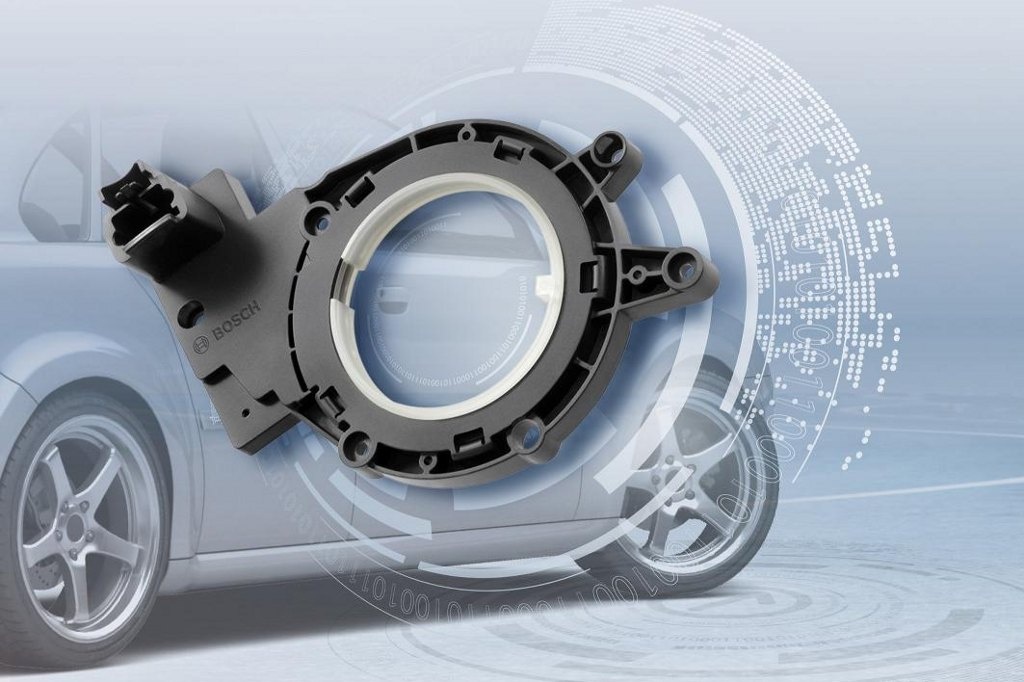Precise and reliable detection of the steering wheel position is an important challenge in the modern vehicle. This feedback is not only used for the steering function itself, but also for related systems as Electronic Power Steering and Electronic Stability Control ESC, as well as adaptive headlight control or functions like the lane keeping assistant, which will also be necessary for partially autonomous cars in future.
The Steering Wheel Angle Sensor is an optical encoder, typically mounted next to the steering column and provides active feedback to the Electronic Control Unit (ECU) creating a dynamic steering response. It is a critical part of the ESC system that measures the steering wheel position angle and rate of turn. A scan tool like MaxiCheck Pro can be used to obtain this data in degrees. Always there’s more than one steering position sensor for redundancy and to confirm data. The ESC module must receive two signals to confirm the steering wheel position. These signals are often out of phase with each other.
Analog Steering Sensors
Analog SASs are similar to throttle position sensors. SASs are wired with a 5-volt reference, chassis ground and signal output and can be tested via a port under the steering column. As the steering wheel is turned, the SAS produces a signal that toggles between 0 and 5 volts as the wheel is turned 360o. It is possible to observe the 0 to 5 volt signal with meters connected to the two SAS sensors. When the wheels are straight forward, the sensors read 2.8v and .4v. If the readings are the same, the two sensors could be shorted together. Most vehicles produce a positive voltage turning right, and a negative voltage turning left.
Digital Steering Position Sensor
A digital SAS is often called a “contactless sensor.” This type of sensor uses LED light, a wheel that acts as a shutter and an optic sensor that measures interruption in the light. These sensors produce a digital square wave signal with the frequency depending on the speed the wheel is turning. With the wheel straight, the voltage is low, but it increases as the wheel is turned away from center.
CAN Bus Module Steering Angle Sensors
SAS clusters connect either directly or through other modules to the ESC via the Controller Area Network (CAN) bus. Nodes on the CAN bus have the ability to interpret and create signals that can be understood by other nodes on the bus.
Testing Direct-Type CAN SAS Sensors
The best way to test modules on a high speed CAN bus is with a scan tool. Most tools can look at the data directly, but some need additional software. If your scan tool needs software, you can still use a meter connected to the high speed CAN bus wires to confirm that the SAS is communicating with the rest of the network.
Resetting Steering Angle Sensors
Many vehicles require the SAS be reset or recalibrated after an alignment is performed or parts in the steering system are replaced. There are three types of reset procedures, systems that self -calibrate on their own, vehicles that require specific wires or buttons be pressed and, systems that require recalibration with a scan tool. If the SAS is out of calibration, most vehicles can tell if they are traveling in a straight line, but if the angle is too far off, the ESC could become disabled.
Self-Calibration
Some newer vehicles can auto calibrate by having the wheel turned from lock to lock and then centered and cycling the key.
Scan Tool Steering Angle Sensor Reset
There are many options for scan tools to reset SASs. Some tools are even integrated into an alignment system. But, most tools recommend that the calibration be performed on a level surface. Also, it is a good idea to perform a lock-to-lock turn to complete the calibration. Here, I’ll recommend MaxiCheck Pro, is specially designed to help you work on steering system. This professional tool can not only perform steering angle sensor reset, but also tasks like steering system problem diagnostics, steering sensor fault memory clear, steering wheel warning light turn-off. For more information, please click on the product image below and browse our Home Site.

Steering Angle Sensor and Its Reset with a Scan Tool like MaxiCheck Pro
by
Tags:
